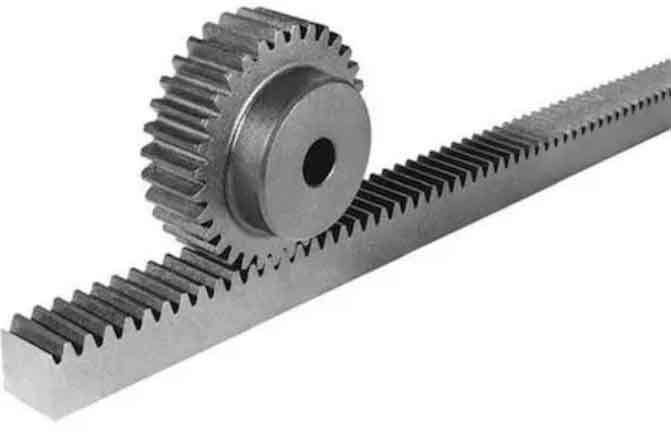
Rack and pinion gears are essential components in motion systems, offering a balance between performance and durability. They are designed to provide efficient power transmission while maintaining robustness and longevity in demanding applications. Here are some key aspects that contribute to the performance and durability of rack and pinion gear systems:
- Load-Carrying Capacity: Rack and pinion gears are designed to handle varying loads and forces. The teeth profile, size, and material selection are critical factors in determining the load-carrying capacity of the gear system. By choosing the appropriate gear size and material, the system can effectively handle the expected loads without compromising performance or durability.
- Precision and Accuracy: The meshing of rack and pinion gears is crucial for achieving precise and accurate motion control. The design and manufacturing process must ensure proper tooth engagement, minimal backlash, and smooth operation. This enables precise positioning, repeatable motion, and accurate control in the motion system.
- Gear Material Selection: The selection of high-quality materials for rack and pinion gears is essential for durability. Common materials include alloy steels, carbon steels, and heat-treated materials that offer high strength, wear resistance, and durability. Proper heat treatment processes and surface treatments can further enhance the gear’s resistance to wear, fatigue, and corrosion.
- Lubrication and Maintenance: Proper lubrication is crucial for the smooth operation and durability of rack and pinion gears. The gear system should be adequately lubricated with the appropriate lubricant to minimize friction, reduce wear, and dissipate heat. Regular maintenance and inspection are necessary to ensure proper lubrication and address any potential issues that may affect performance and longevity.
- Rigidity and Stiffness: Rack and pinion gears should possess sufficient rigidity and stiffness to handle the applied loads and resist deflection. This helps maintain the integrity of the gear system and prevents any loss of motion or accuracy. Rigidity can be achieved through appropriate design considerations, material selection, and structural enhancements.
- Surface Quality and Finishing: The surface quality of rack and pinion gears significantly impacts their performance and durability. High-quality machining, grinding, and finishing processes ensure smooth and precise tooth profiles, reducing friction, noise, and wear. Proper surface treatments, such as case hardening or coating, can enhance the gear’s resistance to wear and extend its service life.
- System Integration and Alignment: Proper integration and alignment of the rack and pinion gear system within the overall motion system are crucial for performance and durability. Proper installation, alignment of gears, and accurate positioning of components ensure efficient power transmission and minimize excessive wear or stress on the gear system.
By considering these factors, engineers and manufacturers can optimize the performance and durability of rack and pinion gear systems. Balancing the load-carrying capacity, precision, materials, lubrication, and maintenance ensures that the gear system operates reliably, delivers accurate motion control, and withstands the demands of the application over an extended service life.
